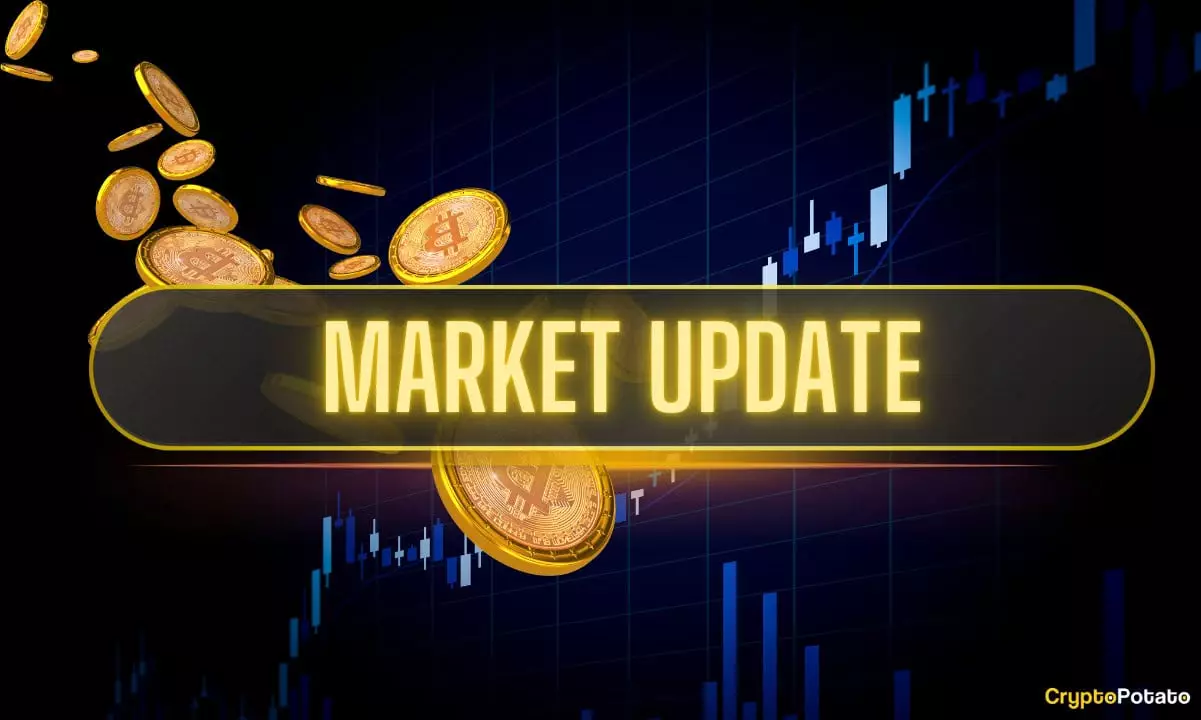Recently, Bitcoin has been riding a rollercoaster of volatility, with its price surging past the psychological mark of $100,000, only to stall at what many had eagerly anticipated to be a new all-time high. Over the last week, the cryptocurrency market reacted positively to a deal between the U.S. and China that promised tariff reductions. While this should have marked a buoyant moment for Bitcoin—buoying it to glorious heights—the reality was far more sobering. A peak just shy of $106,000 was met with a vigorous sell-off, pushing Bitcoin back under $101,000. This phenomenon is not just a simple market correction; it is a reflection of underlying tensions and uncertainties that continue to plague the crypto landscape.
The Waiting Game for Altseason
The cryptocurrency community has effectively mounted a hopeful narrative that the era of altcoins, or “altseason,” has arrived. Several indicators seem to point to this possibility, but it’s crucial to remember that an imminent altseason does not automatically guarantee that Bitcoin will merely sit idly. While Bitcoin remains wrapped in its six-figure comfort zone, assets like Ethereum, Dogecoin, and Hype have demonstrated remarkable double-digit growth. The disparity in performance raises questions: Are we witnessing the birth of innovation within alternate cryptocurrencies, or are investors simply diversifying their portfolios amidst uncertainty surrounding Bitcoin’s future?
As Bitcoin remains the dominant player in the market, its fluctuating fortunes direct investor sentiment, demonstrating that Bitcoin’s power, while considerable, isn’t unassailable. Consequently, the upward trajectories of altcoins could signify either a market shift or merely a temporary distraction from the King of Crypto.
Macroeconomic Wildcards & Bitcoin’s Fate
Amidst speculation of a potential interest rate reduction in the U.S., Bitcoin finds itself caught in an unpredictable macroeconomic landscape. Although a pause in rate hikes could provide a tailwind for cryptos generally, Bitcoin’s ability to leverage these circumstances appears largely contingent on how retail investors react to emerging market sentiments. Recently, there has been a notable shift; smaller investors have been re-engaging with Bitcoin after a quiet period of retreat. The sheer volume of retail participation stands as a testament to renewed confidence yet serves as a harbinger of potential pitfalls if the high prices elicit profit-taking.
Then there’s the contrasting behavior of institutional “whales,” who have been gobbling up Bitcoin by the tens of thousands. The compelling divergence in behavior begs the question: Are institutional investors positioning for a long game, while retail investors play a short game, leading to a distortion in the market? It might very well be that Bitcoin is not simply navigating bullish waters, but rather sailing through an uncertain sea of competing motives and diverging strategies.
Ethereum’s Rejuvenation: A Technological Leap?
Ethereum has effectively rewritten its narrative over the last few weeks, counteracting fears of stagnation with a pronounced resurgence. Withdrawal rates skyrocketed, and the asset’s pricing neared three-month highs. Investors started pulling substantial amounts of Ethereum from exchanges as they prepared for what they believed could be a crucial next phase for the network. Ethereum isn’t just basking in the limelight; it has positioned itself as a serious competitor, urging both retail and institutional investors to reconsider their affinity solely for Bitcoin.
That said, Ethereum’s rise does also punctuate the fragility of Bitcoin’s current standing. As capital flows increasingly gravitate towards Ethereum and alternate coins, Bitcoin risks a falling share of the spotlight it has held for so long. In the world of cryptocurrencies, innovation acts as the tide that raises all boats, but when faith in Bitcoin wavers, are we witnessing the dawn of a new hegemon or a troubling fracturing of the crypto narrative?
Whales vs. Retail: The Disparity of Belief
The coming weeks could very well define what type of market we are dealing with: one led distinctly by informed institutional action or one driven by retail fervor. With bitcoin whales continuing to accumulate their positions, but retail investors inclined to take profits and liquidate some of their holdings for short-term gains, a critical question arises: Is this divergence merely a point of concern or an opportunity for sustainable growth?
As capital controls grow increasingly likely in the United States, the call for an aggressive surge—perhaps even to $1 million—seems more a rallying cry than a feasible target. Therein lies the conundrum; while some believe that macroeconomic changes could catalyze socio-financial shifts favoring Bitcoin, the underlying belief systems of its core investors vary drastically.
Such disparities lay bare the inherent tensions in the crypto markets, where faith and skepticism clash as both factions put forth their narratives. Bitcoin stands at a crossroads, facing threats not solely from market volatility but also from the internal dynamics of its investing populace. As we press on through this tumultuous landscape, the only certainty seems to be uncertainty itself.















